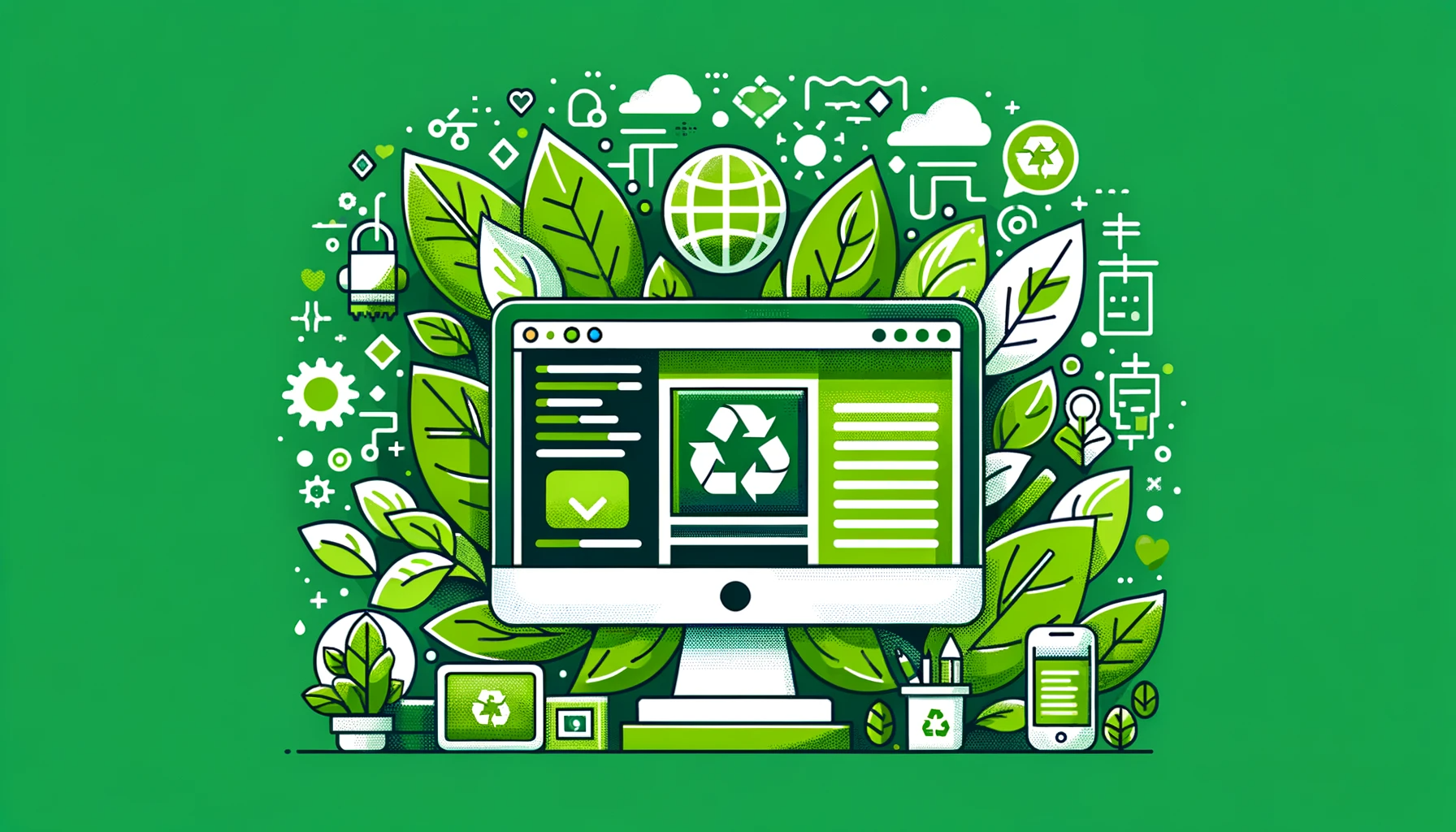In an era where digital presence is crucial, the environmental impact of the internet is often overlooked. Websites, as part of the larger digital ecosystem, consume energy with every visit, contributing to the carbon footprint. Consequently, sustainable web design emerges as a solution, focusing on creating websites that are efficient, clean, and environmentally friendly. In this blog post, we delve into the concept of sustainable web design and how you can make your website more eco-friendly.
Understanding the Impact of Web Design on the Environment
Every time someone visits a website, data is transferred over the internet, requiring energy to power servers, data centers, and the devices used to access the site. This energy consumption contributes to the overall carbon footprint of the digital world. As the internet grows, so does its environmental impact. Sustainable web design aims to minimize this impact by optimizing the efficiency of websites.
Key Elements of Sustainable Web Design
1. Efficient Coding
Efficient coding is crucial. Well-structured and efficient code can significantly reduce the amount of data transferred, thus decreasing energy consumption. Minimizing unnecessary code, using CSS instead of images where possible, and optimizing JavaScript execution are all part of this strategy.
2. Optimized Images and Videos
Furthermore, images and videos are often the largest files on a website. By optimizing these files through compression techniques and proper formatting, you can reduce their size, leading to quicker load times and less energy used.
3. Eco-Friendly Hosting
Moreover, choosing a web hosting provider that uses renewable energy sources can greatly reduce your website’s environmental impact. Many hosting companies now offer green hosting solutions, powered by wind or solar energy.
4. Responsive Design
Additionally, a responsive website adapts to the screen size and device it is being viewed on, which not only improves user experience but also reduces the amount of data transferred, especially on mobile devices.
5. Dark Mode
Implementing a dark mode for your website can also reduce screen energy consumption, especially for OLED and AMOLED screens, where true black pixels are essentially turned off.
Benefits of Sustainable Web Design
- Reduced Carbon Footprint: By making your website more energy-efficient, you contribute to the reduction of global carbon emissions.
- Improved User Experience: Efficient, well-designed websites offer faster load times and a better overall user experience.
- Cost Savings: Optimizing your website can lead to reduced hosting and data transfer costs.
- Positive Brand Image: Demonstrating environmental responsibility can enhance your brand image and appeal to eco-conscious consumers.
Steps to Make Your Website More Eco-Friendly
- Audit Your Current Website: Initially, use tools to analyze the energy efficiency of your website and identify areas for improvement.
- Implement Sustainable Design Practices: Subsequently, apply the key elements of sustainable web design during development or redesign.
- Choose Green Hosting: Next, research and switch to a hosting provider that uses renewable energy sources.
- Educate and Advocate: Lastly, share your journey towards a sustainable website with your audience and encourage others to do the same.
In conclusion, sustainable web design is not just a trend but a necessity in our increasingly digital world. By adopting eco-friendly practices in web design, we can significantly reduce the environmental impact of our online activities. It’s a small step towards a more sustainable future, but with the collective efforts of web developers and site owners, it can lead to a significant positive change. Let’s embrace sustainable web design and contribute to a healthier planet.




